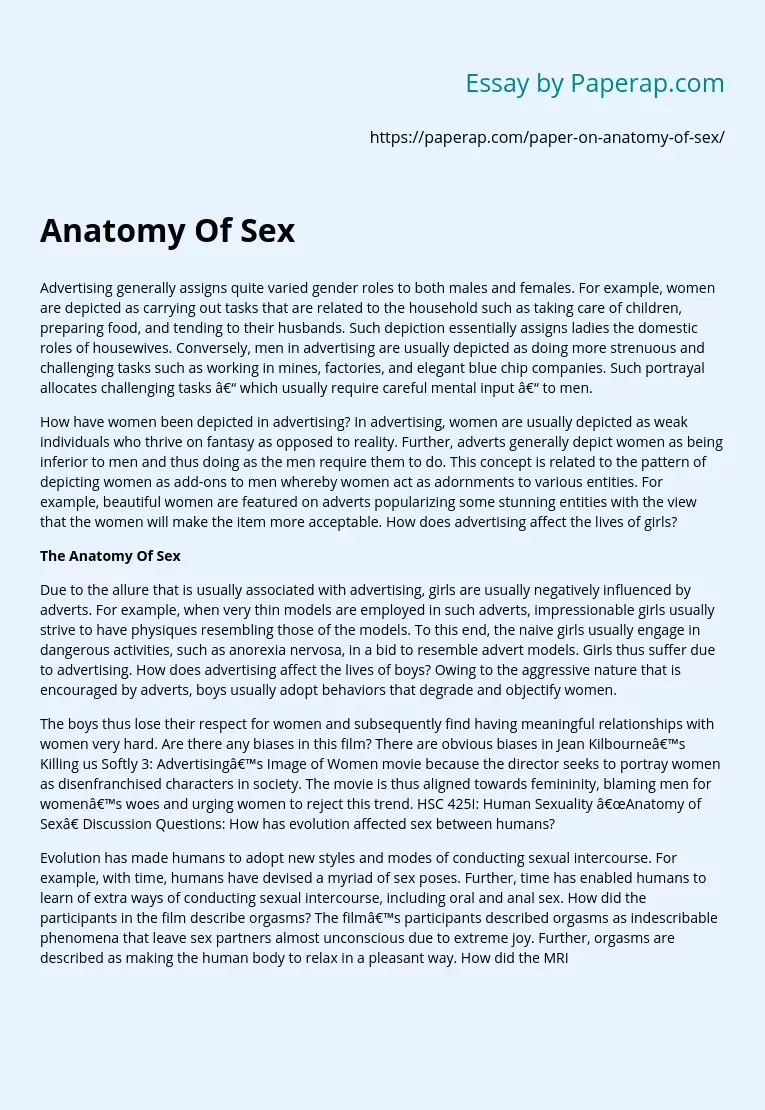Gender Roles in Advertising.
Advertising generally assigns quite varied gender roles to both males and females. For example, women are depicted as carrying out tasks that are related to the household such as taking care of children, preparing food, and tending to their husbands. Such depiction essentially assigns ladies the domestic roles of housewives. Conversely, men in advertising are usually depicted as doing more strenuous and challenging tasks such as working in mines, factories, and elegant blue chip companies. Such portrayal allocates challenging tasks – which usually require careful mental input – to men.
How have women been depicted in advertising? In advertising, women are usually depicted as weak individuals who thrive on fantasy as opposed to reality. Further, adverts generally depict women as being inferior to men and thus doing as the men require them to do. This concept is related to the pattern of depicting women as add-ons to men whereby women act as adornments to various entities. For example, beautiful women are featured on adverts popularizing some stunning entities with the view that the women will make the item more acceptable.
How does advertising affect the lives of girls?
The Anatomy Of Sex
Due to the allure that is usually associated with advertising, girls are usually negatively influenced by adverts. For example, when very thin models are employed in such adverts, impressionable girls usually strive to have physiques resembling those of the models. To this end, the naive girls usually engage in dangerous activities, such as anorexia nervosa, in a bid to resemble advert models.
Girls thus suffer due to advertising. How does advertising affect the lives of boys? Owing to the aggressive nature that is encouraged by adverts, boys usually adopt behaviors that degrade and objectify women.
The boys thus lose their respect for women and subsequently find having meaningful relationships with women very hard. Are there any biases in this film? There are obvious biases in Jean Kilbourne’s Killing us Softly 3: Advertising’s Image of Women movie because the director seeks to portray women as disenfranchised characters in society. The movie is thus aligned towards femininity, blaming men for women’s woes and urging women to reject this trend. HSC 425I: Human Sexuality “Anatomy of Sex” Discussion Questions: How has evolution affected sex between humans?
Evolution has made humans to adopt new styles and modes of conducting sexual intercourse. For example, with time, humans have devised a myriad of sex poses. Further, time has enabled humans to learn of extra ways of conducting sexual intercourse, including oral and anal sex. How did the participants in the film describe orgasms? The film’s participants described orgasms as indescribable phenomena that leave sex partners almost unconscious due to extreme joy. Further, orgasms are described as making the human body to relax in a pleasant way. How did the MRI images change thinking about intercourse?
The presentation of MRI photos has altered thoughts on intercourse because through such images, it is discovered that sexual intercourse is a profound biological process that relies on emotional input to succeed. Analyzing this concept shows that intercourse is essentially a natural process that only utilizes minimal emotional input. Thoughts that intercourse is an exclusively emotional activity are thus quashed. How does the brain affect sexual arousal? After a person sees sexually provocative images, signal are send to the brain which after processing relays information to relevant body parts urging for sexual arousal.
For instance, the brain may facilitate to increased blood flow into the penis, thus making it bulge. Do you think the film is in anyway biased? Jonathan Grupper’s 2005 Anatomy of Sex movie is not biased in my view because it just candidly presents factual information about intercourse without urging for any specific action. Such objectivity denotes the film as being unbiased. Reference Catterall, M. ; Maclaran, P. ; & Stevens, L. (2000). Marketing and feminism: current issues and research. London: Routledge.
Gender Roles in Advertising.. (2019, Dec 05). Retrieved from https://paperap.com/paper-on-anatomy-of-sex/

